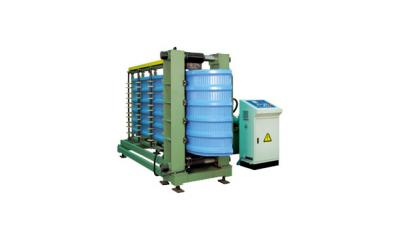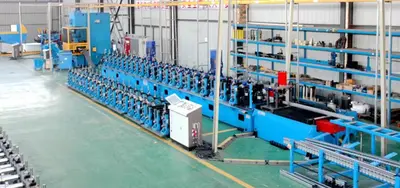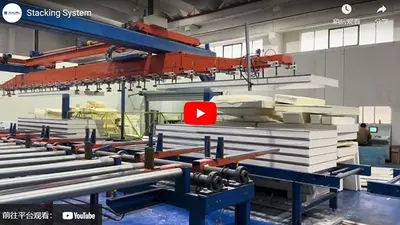Introduction to Insulation Machinery of Rock Wool Production Line
Rockwool production line - blending, storage, and weighing of raw materials
The storage, blending, and weighing system of raw materials is located at the beginning of the rockwool production line. The rock wool fiber is obtained by suitable fiberization system from the melting of the raw material blend, which mainly includes basalt and dolomite. Various types of slag (such as blast furnace and copper), various additives, and appropriately treated production waste can be added to the blend to obtain "bio" fibers.
The system for storage, blending, and weighing of raw materials includes hopper weighing, extraction, and mixing systems for storing and stacking raw materials (various basalt, dolomite, slag, coal balls, and coke), which transport the mixture to the feeding system of the melting furnace.
Rock wool production line - melting furnace
The cupola furnace uses the burning of coke and hot air to melt the raw material blend, converting it into liquid. The melted rock is transformed into rock wool fiber. The body of the melting furnace is mainly composed of high-temperature resistant special steel ("boiler steel"), which melts at high temperatures, and the furnace body uses water cooling. The circulation of the cooling liquid adopts a natural circulation system and does not require the help of pumps. It has inherent safety even in the event of a power outage. There is no need for an emergency power generation system. Some components are coated with special refractory materials (siphon, liquid output, etc.).
The main advantages of the cupola furnace are:
Possibility of closing/opening in a short time;
Cost reduction and easy maintenance;
Ability to recycle production waste and turn it into coal balls;
High operational flexibility;
Design capacity is 1.5 ton/hour to 5 ton/hour (finished product).
Spinneret and rock wool production line spinning machine
The spinneret or spinning machine is the technical core of the system, which converts the liquid into fibers. Depending on the customer's needs and the product's capacity, alternative spinning machines can be provided.
Rock wool production line forming room
The forming room is the downstream part of the spinning machine in the factory, where fibers are collected to form a material called "primary felt." The fibers are blown away from the spinning machine and separated from heavy components (granules), sprayed with an adhesive (phenolic resin, acrylic resin, or eco-resin), and then deposited on a special conveyor belt by vacuum.
The shape and aerodynamics of this part of the factory (using the spinning machine) are very important to ensure high efficiency of the process and uniform distribution of fibers in the primary felt, thus ensuring high quality of the final product. In fact, there are different layers of primary felts (distributed on the main line by pendulums) according to the desired density, which make up the final product.
Rock wool production line curing oven
The curing oven is used to polymerize the adhesive contained in the felt with hot air, giving the final product its density and shape. The brand new curing oven is completely redesigned to improve maintenance and machine efficiency (reduce energy consumption).


 CN
CN
 EN
EN
 fr
fr  de
de  es
es  it
it  ru
ru  pt
pt  ar
ar  th
th  pl
pl  ro
ro 







 Call us on:
Call us on:  Email Us:
Email Us:  #1809, Jianhu Rd, Keqiao, Shaoxing, Zhejiang, China
#1809, Jianhu Rd, Keqiao, Shaoxing, Zhejiang, China 